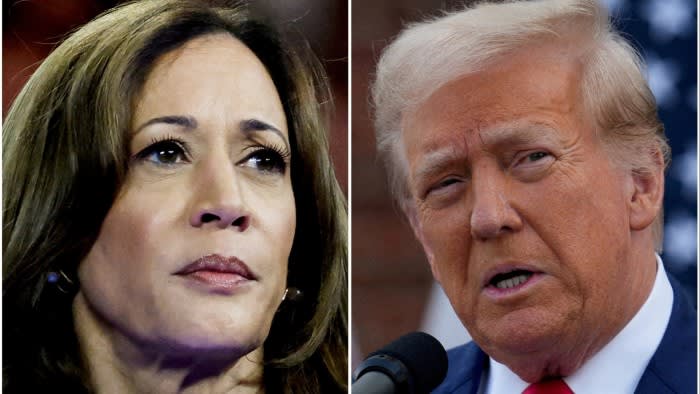Unlock the US Election Countdown newsletter for free
The stories that matter on money and politics in the race for the White House
The writer is president of Queens’ College, Cambridge, and an adviser to Allianz and Gramercy
It is in the nature of electioneering that, whatever their starting point, politicians will tip more populist, promise big things and be economical with the policy details. This US presidential election has been no different. But whoever is declared the winner only stands a chance of delivering on their promises if they formulate specifics to address five areas that influence the future wellbeing of the economy.
This year’s presidential candidates made many ambitious policy statements. They even agreed on some: job creation, ending inflation, protecting domestic companies, eliminating the taxation of tips and improving housing affordability. Donald Trump also opted for additional tax cuts, ambitious deregulation, high tariffs, lower federal spending, expanding fossil fuel production and curtailing environmental initiatives. Kamala Harris has focused on reducing the cost of healthcare and improving access to it, fighting corporate price gouging, expanding tax credits and creating an innovation fund.
Yet both Harris and Trump lack the specifics to meet their promises. It’s not something that should be left unaddressed, even in an economy that has outperformed other advanced countries. Measures are needed to be taken in five areas to stand a good chance of delivering on promises.
First, the incoming president must find a way to maintain growth while repositioning the economy to take advantage of the drivers of tomorrow’s prosperity. This involves removing the brakes on existing economic engines, such as manufacturing and services, and promoting future sources of growth by supporting the smart dissemination of innovations in artificial intelligence, life sciences, green energy, defence, healthcare and food security. Both the Inflation Reduction Act and the Chips Act should be evaluated for course corrections to fulfil their restructuring aims. This needs to be accompanied by more dynamic regulatory approaches to foster innovation and a better understanding of the risk of the balance between job losses and the upside of skills enhancement.
The second challenge is to come to grips with high budget deficits and rapidly rising debt. It was once unthinkable that the US would have almost three years with an unemployment rate around or well below 4 per cent and yet run budget deficits of 6-8 per cent of GDP. To paraphrase John F Kennedy, this is the time of “sunshine” when governments should be “fixing the roof” and not creating additional holes. Yet, whether it is the current deficit at over 6 per cent of GDP or government debt at 120 per cent of GDP, both are on an ultimately unsustainable path.
It’s not just about the size of the imbalances. The incoming administration needs to build much greater operational flexibility for public finances that lack sufficient resilience and agility. This requires reforms to the tax system, including removing distortive exemptions and anti-growth biases; rationalising spending; and liberating more resources for investment and precautionary buffers.
Third, both candidates need to resist the excessive use of the economic tools they favour. For Harris, this means avoiding overregulation and blunt industrial policy. For Trump, it means containing the use of tariffs and tax cuts.
Fourth, the new administration needs to restore credible American leadership at the centre of the global economic and financial order. This is not about a globalist ideology. It is about countering fragmentation which undermines growth and national security. Active US involvement is also needed to develop common responses to shared threats. The alternative is greater vulnerability to more frequent and more violent shocks.
The final issue is proper communication. You need only look at the UK to see how an ambitious economic initiative can fall victim to obfuscation. The Biden-Harris administration learnt this lesson the hard way when it followed the 2021 lead of the Federal Reserve in wrongly characterising inflation as “transitory” only to see it surge to more than 9 per cent. Trump managed it better in the immediate aftermath of his 2016 election victory when his conciliatory tone on the economy flipped equity market losses into gains and set an economic narrative that has served him well since.
Overpromising in electioneering is neither new nor unexpected. The issue now is for the winning candidate to pivot from promises to economic governing lest the US lose its economic exceptionalism and the world lose its one major growth locomotive.
https://www.ft.com/content/1c14a0b4-e36a-4158-ba89-4ba1da9e6723


